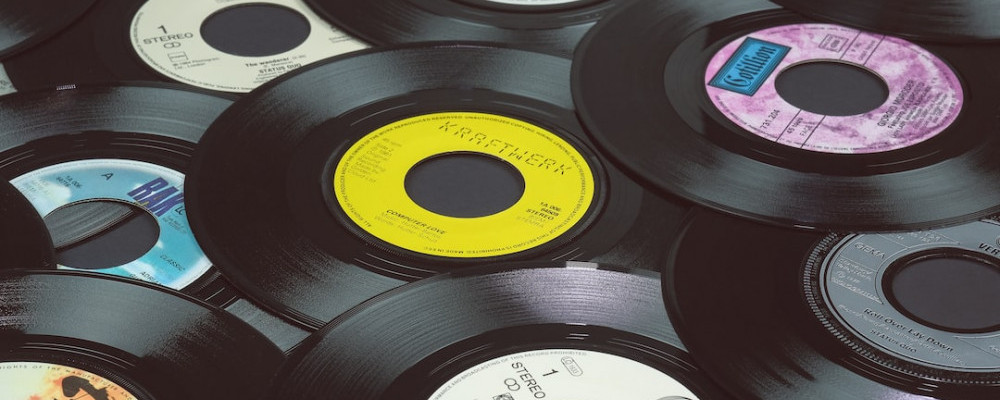
You have a fine collection of 7-inch singles, some are quite rare and might be worth some money. You need some ready cash. You don’t want to sell them but needs must. Before you even think about putting them up for sale, you need to know how to grade vinyl records.
You see, the thing is, nothing is going to have a bigger impact on what they might be worth than the condition they are in. A word to the wise here, don’t bank on making a small fortune. They’re probably not worth as much as you like to think.
Of course, desirability is important, but if they are not in tip-top condition, you will invariably find that the edge will be taken off the demand for them.
Let’s dive in and see if we can get a feel for how to grade vinyl records.
Mint (M)
For Mint condition: both the record and sleeve will be in perfect condition. This cannot be down to one person’s opinion. A range of views must be sought, and consensus arrived at.
In theory, a sealed record would be in Mint condition. However, due to environmental issues, e.g., heat or damp, even a sealed record may have become warped. In such a situation, there is no chance that it could be Mint.
(If you were relying on your record being sealed to indicate Mint status, hard luck. You’ve got to be able to see the record to make that assessment)
Anyway, moving on… records which have been played can still be Mint. This is an extremely rare situation, but it is possible. The record player it’s been played on, along with the cartridge and needle used, must be absolutely top-notch and in pristine condition themselves.
This is an extremely rare rating and prices are sky high.
Near Mint (NM or M-)
Dropping down a notch from the Mint rating we have Near Mint. For such a grading, records and their sleeves must both have no visible signs of wear and tear. On the record’s label, no writing (unless artist signed) or stickers. Labels not stuck on accurately will reduce the grading.
Owners of Near Mint records have been utterly scrupulous in their care and played extremely rarely. Even the most well-cared-for records cannot be considered in Near Mint condition if they are in constant rotation.
Very Good Plus (VG+) or Excellent (E)
For such a grading, this is a record with great playback – very low or zero background noise with only minor signs of wear and tear, perhaps from handling.
Very Good (VG)
A Very Good grading will result in a record having more noticeable signs of wear and tear. In terms of playback, there will likely be minor interruptions during quieter interludes in a performance, but nothing that would spoil your listening experience.
Good (G), Good Plus (G+) or Very Good Minus (VG-)
Now we are getting down to the lower end of the scale, we are seeing records with more noticeable signs of wear and tear, especially in terms of groove wear. As a result, in playback, there will be significant surface noise but there should be little or no skipping.
Record sleeves may well have been written on and may well have missing or marked inner sleeves.
If you have a rare record in this condition, it could be worth a few pennies to a collector, but in reality, you don’t have a great stack of bargaining chips to drive a very high price.
Poor (P), Fair (F) and Good Minus (G-)
These records are typically characterized by suffering from major scuffs and scratches. They may also be warped and cracked. Their sound quality is poor, and, in many instances, they will jump and skip due to their physical imperfections.
Sleeves will be in poor order with rips, tears, and rounded corners. Labels will be scribbled on and/or damaged.
Even the rarest record, if presented in this condition, is unlikely to sell for very much.
Worth Noting
A record’s vintage does not excuse blemishes in terms of grading. I.e., an Elvis LP from the 1950s must adhere to the same standards as a Taylor Swift album from the 2010s to be classed as a Near Mint specimen.
Records are viewed as a package, with both the disc and the sleeve required. In general, with very few exceptions, a record without its sleeve is worthless. The same is true for a sleeve without its record.
You would not expect to find vinyl records dating from the 1940s, 50s and 60s in Mint or Near Mint condition. In this circumstance, as a seller, you have a little more bargaining power. It may be that even if graded Very Good Plus or lower, its rarity and the level of your prospective buyer’s desire for it may see you achieve a better price.
Moving onto records from the 1970s and subsequently, buyers are much more in control in terms of what they will pay because the rarity factor becomes less of an issue.
Visual versus aural grading
As a single seller with a small number of records that you are trying to sell, you probably have an advantage over record dealers in that you can play them to ascertain how well they play. You can assess the sound quality and identify any passages where surface noise is an issue or where it may jump or skip.
Dealers generally must rely on visual grading. They will have a great deal of records and do not, therefore, have the time to play their entire stock. Defects like scratches and warping are easy to see. Others, such as groove wear are more difficult to discern by eye.
A good rule of thumb, from Goldminemag.com suggests “that older LPs (1950s to about 1971) tend to play better than they look, and newer LPs (at least until 1989) tend to play worse than they look.”
Hints and tips

For visual grading, a strong light is essential. Holding the disc, turn it and angle it every which way to overcome shadows which may be cast onto the surface. Take your time to analyse the disc very carefully. Take notes of imperfections so you have a record to back up your assigned grade. Do the same and note aural imperfections if you play the record.
Use your list of observations to make sure that you describe what you are selling in as much detail as possible. It is better to tell all rather than for a buyer to receive their record only to find that it has an imperfection that you haven’t told them about.
And finally…
If you are in doubt about grading the records you have in your possession, don’t be worried about taking them to your local record store and asking for advice. They are used to assessing and grading large numbers of records and will, therefore, likely be able to advise you.
If you have enjoyed this article or have anything you would like to add to the debate, please leave me a comment below.


Hey Simon,
Great article on how to grade vinyl records! It’s essential information for anyone looking to understand the value of their collection. I appreciate the detailed breakdown from Mint to Poor ratings.
I have a question: You mentioned that older LPs tend to play better than they look, while newer ones play worse than they look. Could you elaborate on why this is the case? Is it related to changes in manufacturing or materials over the years?
Thanks for sharing your expertise!
Hanna, thank you for your comment.
It’s as much to do with mastering as anything. Older records have a more direct route from the mixing desk to the final product. The manufacturing process has not changed appreciably and neither has the chemical composition of the vinyl itself.
I hope this helps,
Simon